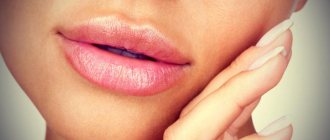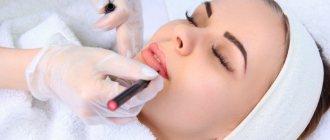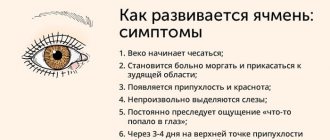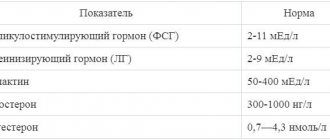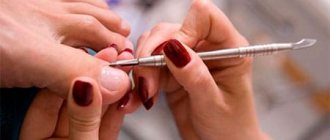Otitis is an inflammatory disease that affects different parts of the ear. The disease occurs among both men and women, regardless of their age.
The main signs of an inflammatory process in the hearing organs are:
- Pain in the ear.
- Increased body temperature.
- Noise in ears.
- Headache.
- Hearing impairment.
- Purulent discharge from the ear.
- Deterioration of general condition.
Symptoms vary and depend on which part of the ear is affected. Possible causes that can lead to otitis media include:
- Mechanical damage to the ear.
- Chemical injuries to the hearing organ.
- Pathogenic microorganisms such as bacteria, as well as viruses and fungi.
Otitis media often appears as a complication after acute respiratory illness and influenza. If the first symptoms of ear inflammation occur, you should immediately contact an otolaryngologist, who can make the correct diagnosis and prescribe the correct treatment. In the absence of proper therapy, unwanted complications can develop, including the development of a chronic form of the disease and complete hearing loss. What ear ointments are there?
Types of ointments
Elimination of otitis should be carried out under the supervision of a medical specialist. Ointment for inflammation has a positive effect when the outer ear is affected.
With otitis of the inner and middle ear, liniments are powerless due to the structural features of this organ. The inner and middle ear are located in the temporal bone and are surrounded by a membrane that has a protective function and protects the ear from the harmful effects of the environment.
Types of ointments for ears:
- Antimicrobial.
- Hormonal.
- Based on plants and other substances.
The ointment is prescribed by the doctor after making the necessary diagnosis, which may include a general examination, as well as a blood test, and so on. You can use liniments yourself, following the instructions of an otolaryngologist.
The main limitation to the use of ear ointments is the presence of a hole or rupture in the eardrum, which can allow the medicine to enter the middle ear and have a detrimental effect on the auditory nerve.
Self-medication and the use of traditional medicine for inflammation in the ear are strictly contraindicated.
Hydrocortisone ear drops for children
Hydrocortisone is a glucocorticosteroid drug that has a pronounced anti-inflammatory and antiallergic effect. Used as local and systemic treatment. In addition, it has a fast-acting decongestant, antitoxic and immunosuppressive effect.
Hydrocortisone: description of the drug
Hydrocortisone is a hormonal drug, therefore it is approved for use only on the recommendations of the attending physician. In practice, this medicine is prescribed for the treatment of various diseases. The decision is based on the patient's medical history and complaints.
Active ingredients: hydrocortisone acetate (depending on the form of release, the mass of the substance varies), lidocaine hydrochloride. Auxiliary components: sodium chloride, methyloxybenzoate, propylene glycol, petroleum jelly, benzyl alcohol. Has a long-lasting healing effect.
Providing a pronounced anti-inflammatory and analgesic effect, it is indicated for use in inflammatory diseases of the ears, such as:
- otitis of the external and middle ear;
- dysfunction of the auditory tube.
It is also prescribed for preventive purposes to people who use earplugs, hearing aids, and headphones for a long time.
In ointment format it is used for inflammatory processes on the skin:
In the form of intra-articular injections it is prescribed for:
- epicondylitis;
- acute bursitis;
- osteoarthritis.
Can it be used by children?
Treatment of children with hydrocortisone is carried out quite often. Depending on the form of the drug, the age of the patient and the type of disease, different volumes are prescribed. If necessary, under the supervision of a doctor, therapy is carried out from the age of three months.
Important: only a doctor can prescribe the permissible dosage and duration of treatment. You should not stop or interrupt the prescribed course of treatment on your own without discussing this with your doctor.
As a rule, the course for children using this drug does not exceed 14 days. Taking into account the age of a small patient, the daily dosage of medication varies from 5 to 30 mg, taking into account several doses.
Hydrocortisone drops in the ear
Today, the drug in question is increasingly used in the treatment of diseases of the upper and lower respiratory tract, nasopharynx, ears (otitis media, sinusitis, bronchitis, etc.). In the treatment of ENT diseases, the drug is used in the form of:
- inhalations;
- drops;
- suspensions.
Mode of application
Due to its fast-acting property of reaching the source of inflammation and destroying pathogens, drops in the ears are becoming increasingly popular. Due to the fact that one of the components of this product is a hormone, consultation with a doctor will be necessary before use.
At the age of 6 to 14 years, instill 1-2 drops once a day. For the youngest patients, the dosage is calculated based on the severity of the disease and body weight.
Contraindications
There are certain conditions under which the use of drops is contraindicated:
- children under 2 years of age;
- pregnancy, breastfeeding period;
- individual intolerance to components;
- renal failure;
- diabetes;
- severe hypertension;
- tendency to form blood clots;
- stomach ulcer;
- heart failure.
Precautionary measures
When treating with this drug in drop format, experts recommend adhering to the following precautions:
- Drops should not be used if the eardrum is perforated. In general, it is not advisable to use this drug for hearing injuries, since serious complications may develop.
- You should not stop the course of treatment on your own, or exceed the dosage prescribed by your doctor. If you think your child has fully recovered, consult your doctor about next steps.
If your child gets worse after use, stop the course and seek immediate medical attention.
Hydrocortisone suspension
The drug in suspension format is most often used for injection. It is used to treat diseases such as rheumatoid arthritis, osteoarthritis, bursitis, etc.
Is it suitable for ear diseases?
In some cases, doctors decide to use this drug in the fight against inflammatory ear disease. A suspension of hydrocortisol can be added to the main antibiotic solution or used as an independent medicine.
Also used as a treatment for otitis of an allergic nature.
Directions for use and dosage
In the case when the patient does not have a perforation of the eardrum, and the inflammatory process is at stages 1 and 2, local treatment is aimed at suppressing the source of inflammation and reducing pain syndromes.
The suspension is used as one of the means of complex therapy:
- A warming compress is applied to the patient's ear.
- A turunda moistened with a solution of a suspension of hydrocortisone and 0.1% furatsilin alcohol is inserted into the ear canal.
- Drops of carbolic glycerin (1-2 drops) are instilled into the ear.
If the patient has a perforated eardrum, hydrocortisol is administered through the nostrils. Through the nasal passages, the product will also effectively reach the infectious source. The single dosage for an adult is 50 mg, for a child 2 mg per kg of body weight. The dosage may be changed at the discretion of the attending physician.
If the prescribed treatment does not have a positive result, and the inflammatory process continues to increase, the doctor decides to perform paracentesis or tympanopuncture of the eardrum. The method is a process of inserting a thin needle into the area of the inferior posterior quadrant, suctioning out the purulent contents and injecting a hydrocortisol suspension into the tympanic cavity.
Therapy is usually carried out on an outpatient basis. But, with a complicated course of the disease in young children, as well as elderly people, treatment is carried out in a hospital.
"Levomekol"
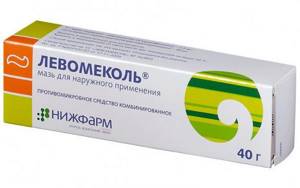
Ear ointment is popular and in demand in the treatment of hearing organs. Its structure includes the following substances:
- Chloramphenicol has an antibacterial effect, in particular against gram-positive microorganisms, as well as streptococci and Pseudomonas aeruginosa.
- Ethylene glycol has an absorbent and anti-edematous effect.
- Methyluracil helps the proliferation of pigmented epithelial cells, and also compensates for defects in the structure and structure of connective tissue.
The drug is used at all stages of otitis externa with accumulations of purulent exudate, carbuncles, and inflammation of the skin. In case of inflammatory lesions of the ear, a cotton swab with Levomekol is inserted into the outer ear for five to six hours.
Vishnevsky ointment"
The medication for inflammation of the hearing organs has a beneficial effect due to its pharmacological properties. Ointment for otitis media has antiseptic properties and helps improve blood microcirculation. The drug consists of:
- Tar has a specific aroma that actively fights microbes, heals wound surfaces, and relieves inflammation.
- The xeroform consists of two components: bismuth salt (oxidizes pathogens) and carboxylic acid (disturbs the structure of bacteria).
- Castor oil helps heal wounds and also has antibacterial effects.
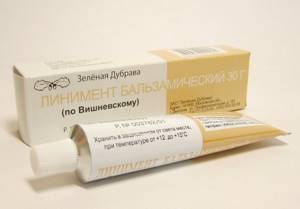
The drug is used for the treatment of otitis media only in the absence of purulent exudate. In such a situation, a cotton swab moistened with medicine is inserted into the ear for about three hours. After this time, the tampon is removed and the skin is wiped with a napkin. The procedure is carried out three times a day.
How long should you keep the cotton wool in your ear? Stage 1: Preparation
Earwax constantly accumulates in the ear canals. The body produces a substance to trap dust and dirt particles that, if contacted with the eardrum, can damage the thin septum. During inflammation, the ears secrete a small amount of pus along with wax. Both substances mix and settle on the walls of the ear canals, preventing the absorption of droplets. For medications to work properly, you need to thoroughly clean your ears before instillation, but this procedure has its nuances.
Water should not get into the inflamed auditory organs, so you should forget about water and soap until complete recovery. Doctors recommend getting special ear swabs, which are different from regular cotton swabs. If the latter have an oblong shape and fit completely into the ear canal, then the former resemble a spinning top. These sticks have a thin tip and a wide base that does not fit into the ear.
Why such an unusual shape? Sulfur plaque covers the entire ear canal, but only the layer located at the entrance needs to be removed. The body removes the sticky substance mixed with dirt to clear the excess from the ears, and if the Q-tip is inserted too deeply, it can push the discharge back. A sulfur plug forms, which clogs the canals and causes partial hearing loss.
"Gyoksizon"
The medicine has a wide spectrum of action. Helps reduce inflammation, eliminates swelling and hyperemia.
Ointment for treating ears contains:
- Oxytetracycline is an antimicrobial substance that actively fights gram-positive and gram-negative pathogens.
- Hydrocortisone is a hormonal substance that eliminates swelling and burning and reduces the release of wax from the ears.
A cotton swab soaked in the preparation is inserted into the auricle for four hours. The procedure should be repeated four times a day. The duration of therapy is five days.
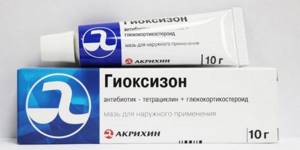
The main adverse reactions include allergic manifestations, as well as burning of the epidermis.
Ichthyol ointment
This ear medicine is used very often. Ichthyol ointment has an antimicrobial effect and prevents further development of the disease, and also has a positive effect on the upper layer of the skin, eliminates inflammation, and helps eliminate the keratinized layer of the epidermis. The drug contains:
- Ichthyol. Helps improve microcirculation, eliminates swelling, and is analgesic.
- Petrolatum. Promotes uniform distribution of the medication.
Melting under the influence of body temperature, ichthyol ointment forms a thin film that covers the area affected by the pathological process.
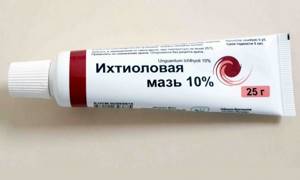
The medication is injected into the ear with a cotton swab for three hours for four to five days. The medicine is not recommended for use in case of allergies to substances included in its structure, and in case of purulent exudates from the auditory organ.
Recommended Antibiotics
If a sore throat in a nursing mother was caused by a sore throat and is accompanied by an increase in body temperature, antibiotics are added to local antiseptics. It is simply necessary to take such drugs, since the presence of pathogenic bacteria in the body leads to dire consequences. In particular, untreated tonsillitis will lead to chronic tonsillitis, which is accompanied by constant inflammation of the tonsils.
With a decrease in immunity and the presence of provoking factors (for example, hypothermia), sore throats will be frequent (3-4 times a year). But the main danger of untreated sore throat in a nursing mother is the increased risk of mastitis. The presence of pathogenic bacteria can cause breast infection.
For the treatment of sore throat in nursing mothers, antibiotics compatible with lactation are used:
- penicillins (Amoxicillin, Ampiox)
- macrolides (Azithromycin, Sumamed)
- cephalosporins (Cephalexin, Cefazolin)
In accordance with WHO recommendations, taking these drugs does not require interruption of lactation for the period of treatment. These medications should be prescribed by a doctor, who should be asked about compatibility with hepatitis B. Treatment of sore throat during breastfeeding with antibiotics should be carried out for at least 7-10 days. You cannot stop taking the pills before the specified period. This will only cause temporary relief of the condition, and not the destruction of the pathogen. During breastfeeding, antibiotics belonging to the groups of fluoroquinolones, tetracyclines, and chloramphenicol are contraindicated for treating the throat. They can have a negative impact on the child's development.
General recommendations
- Don't rush to lower the temperature! You need to take action if the numbers exceed 38 ºС
- Among antipyretic drugs during breastfeeding, you can use Cefekon suppositories, as well as Nurofen, drugs with paracetamol. Aspirin and analgin are contraindicated for a nursing mother
- It is better to take tablets after feeding the baby so that a minimum amount of unwanted substances gets into the milk
- Additionally, use local antiseptics. You can treat your throat with Lugol's solution
- It should be borne in mind that the disease is contagious, so it is necessary to limit contact with others. The child must be placed in a separate room. To prevent it from becoming infected, a nursing mother should wear a special mask
"Clotrimazole"
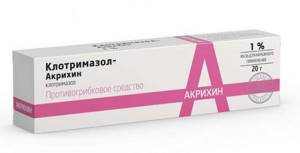
The drug is used only in a situation where an inflammatory ear infection was caused by a fungus in a person’s ears, which usually happens when using hormonal drugs for a long time. The main limitation is considered to be allergic manifestations, as well as the first three months of pregnancy and purulent skin diseases.
Clotrimazole ointment is applied to the damaged area, the medication is quickly adsorbed and forms a protective layer. The drug remains on the skin for five hours, and then it must be washed off well. This procedure is carried out three times a day. The duration of therapy varies from 21 to 28 days.
"Triderm"
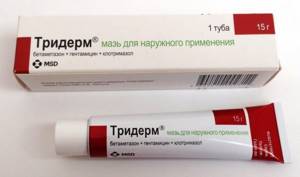
The drug has a positive effect in the absence of purulent exudate. Its structure includes:
- Betamethasone – eliminates pain.
- Clotrimazole - eliminates many types of fungi.
- Gentamicin has a bactericidal effect.
Fungus in a person's ears can be cured with Triderm. This medication is used for fungal diseases, inflammation of the skin of allergic origin. It is not recommended for use in cases of tears or holes in the membrane that separates the outer and middle ears.
In addition, Triderm cannot be used for otitis media, as well as allergies to substances included in the structure of the drug. Liniment is inserted into the ear using a cotton swab twice a day for six hours. The duration of treatment is one week.
Boric acid in the ear is used by adults during pregnancy. The use of acid in the treatment of ears
The product is popular in the treatment of the ear cavity.
It is used in folk and traditional medicine. The healing effect is achieved due to the antiseptic and warming properties of the drug. Boric acid in the ear: use should not exceed seven days; if side effects described in the instructions for the drug occur, use of the product should be stopped and the ear should be rinsed with warm boiled or distilled water; before taking the medicine, it is recommended to consult with an ENT doctor.
For otitis media
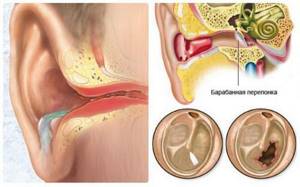
Otitis is an inflammation of the ear cavity. Accompanied by swelling of the ear canal, increased local and sometimes general temperature, pain, and impaired hearing function.
For otitis, use a 3% solution of medicinal liquid.
Inflammation is treated with instillation of boron solution, as well as night compresses. Before instillation, be sure to clean the ear cavity of wax. We tilt our head back onto the healthy ear, instill three drops of the drug into the damaged ear and lie in this position for about ten minutes. Afterwards, tilt your head in the opposite direction and remove any remaining liquid with a cotton swab. After the procedure, it is recommended to walk around with a cotton swab in the sore ear for some time to improve the warming effect of the medicine.
At night, gauze swabs soaked in boron mixture should be inserted into the ear. Wet the tampon lightly so that liquid does not drip from it. The abundance of the drug will provoke a strong burning sensation in the ear cavity and cause a burn.
The course of treatment should not exceed seven days. The procedure is repeated four times a day.
For sulfur congestion
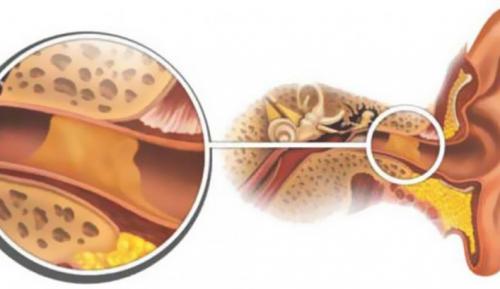
The formation of wax plugs in the ears is a very unpleasant phenomenon. It causes discomfort, a feeling of fullness inside the ear canal, acute pain, and leads to hearing impairment. In addition, cerumen plug can damage the integrity of the eardrum.
Before cleaning your ear, you need to be sure that the ear canal and eardrum are not damaged.
The following remedies will help clear the passage of sulfur:
- a stream of warm water;
- mineral oil;
- soda solution;
- hydrogen peroxide.
The most common method is rinsing with a 3% peroxide solution. The patient lies on his side on his healthy ear. Peroxide is buried into the damaged area so that the entire passage is filled with liquid. Lie in this position for about 20 minutes. During this time, the product dissolves sulfur deposits. Afterwards, the ear should be cleaned of any remaining wax with a stream of warm water.
After each cleaning procedure using one of the above methods, it is recommended to instill a 3% solution of the drug into the ear canal. This procedure will prevent the development of inflammatory processes and warm the ear after cleaning.
Hydrocortisone ointment
Liniment perfectly eliminates swelling. Hydrocortisone ointment is also used for allergies and to reduce swelling after insect bites. The drug is applied to the ear canal with a cotton swab four times a day. The procedures are repeated for seven days in a row.
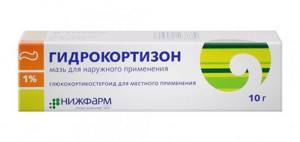
Longer use of the medication can lead to the appearance of fungal diseases with all the ensuing consequences. Ear ointment is contraindicated for use in the first trimester of an “interesting situation”, as well as for babies under one year of age. In addition, it is prohibited to use liniment for persons who suffer from diseases of the adrenal glands, as well as in case of allergic manifestations to the components included in the structure of the pharmacological agent.
The pharmacological course of any medication is prescribed individually, depending on the causes of the disease. You must strictly follow the recommendations of a medical specialist, adhering to all his prescriptions.
Hydrocortisone in the ear - suspension and drops how to use them
Hydrocortisone is a glucocorticosteroid drug that has a pronounced anti-inflammatory and antiallergic effect.
Used as local and systemic treatment.
In addition, it has a fast-acting decongestant, antitoxic and immunosuppressive effect.
Hydrocortisone suspension
The drug in question in the form of a suspension is intended for injection . This form of drug release successfully copes with various types of osteopathic defects, including:
- glenohumeral periarthritis
- tenosynovitis
- rheumatoid arthritis
- bursitis
- and other similar diseases.
A hydrocortisone suspension is injected directly into the joint . This guarantees a quick medicinal effect and pain relief. At the same time, this method of treatment has a negative effect on hyaline cartilage, so treatment in this way is recommended only if a 21-day break is observed between injections.
How to use hydrocortisone
The way in which a drug is used varies depending on the form in which it is released and the nature and severity of the disease.
Most often, hormonal drugs are prescribed by a doctor , which means that in matters of dosage it is necessary to rely entirely on his instructions.
This is exactly the case when the instructions for using the drug will definitely not be superfluous: after reading it, you will know exactly how to use the drug so as not to harm yourself.
Hydrocortisone drops: use for various diseases
If you have an inflamed outer ear , instill 3 drops of the medicine into each ear 2 times a day. Inflammation of the middle ear requires more serious treatment and, accordingly, instillation of 4 drops of the drug into each ear.
All of the above applies to adults. If the patient is a child between 6 and 14 years old, you can drop 2 drops into each ear once a day.
Try not to use these drops for more than 14 days, otherwise you may cause harm to your health.
How is hydrocortisone suspension used?
Injections of the drug are made intra-articularly and periarticularly . There are certain restrictions on treatment with this form of hydrocortisone, which are introduced solely for the purpose of preventing harm to one’s health. So:
- No more than 3 joints can be treated per day
- The same joint can be treated no more than three times a year
Adults are administered from 5 to 50 mg of the drug in the manner indicated above. The dosage depends on the size of the joint and the severity of the disease.
Young patients should receive 5 to 30 mg per day, but this amount of the drug should be divided into several doses. Periarticular administration allows the following dosages:
- If the child is over 3 months old. up to 1 year - 25 mg
- If the child is from 1 to 6 years old - from 25 to 50 mg
- For a child aged 6 to 14 years – 50 – 75 mg.
Hydrocortisone ointment: method of application and dosage
Hydrocortisone ointment is used to treat eye diseases . The following ailments are amenable to this therapy:
- iridocyclitis
- blepharitis
- allergic conjunctivitis
- uveitis
- keratitis
Using the ointment is very simple: a 1 cm long strip is placed behind the lower eyelid. After application, you need to sit with your eye closed for some time so that the medicine is absorbed into the eye tissue and begins its work.
Contraindications to the use of hydrocortisone
Just as it is important to observe the required dosage of the drug when using it, it is very important to know about the contraindications to the use of hydrocortisone. Remember: if you yourself started using this medicine without a doctor’s prescription and did not take into account some contraindication to the use of this medicine, only you will be to blame for the deterioration of your health.
If we are talking about local and external use of hydrocortisone, it should not be used in the following cases:
- children under 2 years old
- individual intolerance to the drug in general or its components in particular
- too short a period after vaccination
- violation of the integrity of the skin
There are many contraindications to intramuscular or intravenous administration of hydrocortisone. Here are just a few of them:
- parasitic diseases
- mycoses
- chicken pox
- measles
- decompensated form of diabetes mellitus
- tuberculosis (any form)
- exacerbation of peptic ulcer
- pregnancy and lactation
- renal failure
Pregnancy and breastfeeding are a contraindication to another method of drug administration - intra-articular. It is also impossible to treat in this way if the treatment was preceded by arthroplasty or intestinal anastomosis.
Tumor-like formations on the skin, acne vulgaris, perioral dermatitis, manifestations of syphilis on the skin - these are all signs for which hydrocortisone should not be used externally. Naturally, pregnancy and breastfeeding are added to this.
Interaction of hydrocortisone with other drugs
If you take antipsychotic drugs, carbutamide, or azathioprine, and also use hydrocortisone ointment for treatment, your risk of developing cataracts increases.
Beware of being treated with this drug at the same time as taking anticholinergic drugs, antihistamines and tricyclic antidepressants - intraocular pressure may increase with all the resulting unpleasant sensations.
Hydrocortisone suspension has much more nuances in drug interactions. So, if you take acetylsalicylic acid during treatment with hydrocortisone, it accelerates its removal from the body and reduces its concentration in the blood plasma. Discontinuation of the drug entails an increase in the concentration of salicylates and an increased risk of side effects.
Hydrocortisone increases the risk of paracetamol liver toxicity . Therefore, even if you are sick with a fever, you should think about another antipyretic medicine for this period or resort to traditional methods of relieving fever.
Cyclosporine will only increase the side effects of hydrocortisone.
If we are talking about a child or elderly patient, this is not only undesirable, but also entails a direct health risk, since at this age side effects from any drug can appear even without additional “drug stimulation”. By the way, you will get exactly the same effect as from cyclosporine from using ketoconazole together with treatment with a hydrocortisone suspension.
Diabetics should keep in mind that the drug in question reduces the effectiveness of hypoglycemic drugs.
When used in high doses, hydrocortisone in this release form reduces the effect of somatropin.
The use of antacids during treatment reduces the absorption of the described medication, thus leading to less effective treatment.
If you are going to take non-steroidal anti-inflammatory drugs along with hydrocortisone suspension treatment, you have an increased risk of gastrointestinal bleeding and ulceration of the gastrointestinal tract.
Therapy with a hydrocortisone suspension during treatment with immunosuppressants can lead to the development of infection and lymphoma.
"Sofradex" for ears
There is no ointment; the medicine is produced only in the form of drops. For inflammatory and infectious lesions of the ear, the drug is instilled into the external auditory canal, 2 drops four times a day. If necessary, you can moisten a cotton swab with the solution and insert it into the inflamed ear for 15 minutes. In addition, the drug is used to treat eye diseases.
The annotation says that the duration of therapy is about one week, but if during this time the patient has not noticed any positive dynamics, then you should contact the doctor again; perhaps the treatment was prescribed incorrectly or the diagnosis was made incorrectly.
Despite the fact that Sofradex is used topically, a small part of the drug is still absorbed into the general bloodstream and can have a general effect on the body, especially if the medicine is used for a long period. Women during pregnancy are not given medication therapy, since there is no clinical experience with the use of drops.
How long does it take for boric alcohol to take effect?
As already noted, boric acid is used extremely rarely for the treatment of otitis media in children.
On the advice of the Pharmacological Committee in the USSR, the use of boric acid for the treatment of otitis media in children and pregnant women has been prohibited since 1987. Even if your doctor has prescribed the use of this drug, you must do the following:
- Using cotton swabs, get rid of sulfur accumulations and purulent discharge. If a sulfur plug has formed, then use hydrogen peroxide;
- The water-vinegar solution must be drawn into a pipette;
- Place 1 drop of solution into the sore ear, with the patient lying on his side;
- After 5 minutes, remove excess moisture using a dry turunda.
The use of boric acid in children is allowed only in the early stages of otitis media, when the eardrum is still in a pre-perforated state. In simple words, if the accumulated fluid has ruptured the eardrum, it is prohibited to use boric acid to treat otitis media in adults and children. Before perforation of the eardrum, boric acid treatment must be approved by a qualified specialist.
Boric acid for ears is a special solution containing three percent ethanol. This product has antiseptic and disinfectant properties. Its use is advisable for various diseases of the hearing organs and in the treatment of skin diseases. The active ingredient is boric acid.
The antiseptic effect lies in the fact that the solution has the ability to neutralize the protein structures of the cells of pathogenic microorganisms, thereby stopping the growth and development of pathogenic microflora.
If boric alcohol is used in the ear, the instructions say that this product has an antibacterial, antifungal, antiparasitic, anti-pediculosis, astringent, and fungistatic effect. The drug is used to treat the following diseases:
- weeping eczema;
- pyoderma;
- diaper rash;
- otitis media of various origins.
The active components of the drug coagulate the protein and enzyme structures of microbial cells. This disrupts the permeability of cell membranes. The composition is absorbed into damaged skin and mucous membranes, accumulates in tissues and organs. Elimination is slow. The drug has an irritating effect on mucous membranes and tissues.
If boric alcohol is used in a child's ear, rapid penetration of its active components into the tissues and mucous membranes is noted.
This medication is not used for children under one year of age. At older ages, doctors rarely prescribe boric acid, since there are currently more effective drugs for the treatment of otitis media in children.
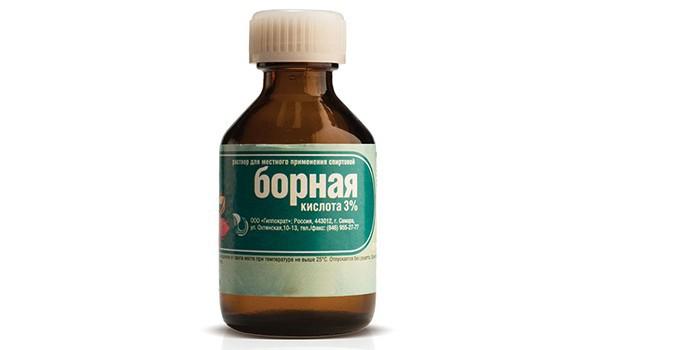
Usually after the first procedure the patient experiences relief. After three days of regular use of the medicine, the pain and other symptoms that accompany the development of otitis media should decrease. Otherwise, it is recommended to consult a doctor to adjust the treatment regimen.
Flucinar ointment: instructions for use, price and reviews
For external otitis, the doctor may recommend the use of Flucinar. The drug is produced in the form of a gel and ointment for external application in fifteen gram tubes. Apply to the damaged area of the skin twice a day. The maximum concentration of the active ingredient should not exceed two grams.
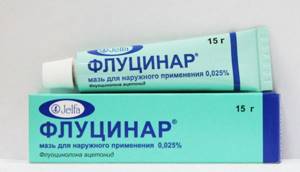
The drug has anti-inflammatory, as well as antipruritic and anti-exudative effects. In addition, Flucinar is used for allergic reactions, according to the instructions for use and reviews.
The price of Flucinar ointment ranges from 270 to 400 rubles. The shelf life of the medicine is sixty months. For external otitis, the drug must be used in the form of turundas, which are impregnated with the drug. The recommended duration of treatment varies from seven to ten days.
It is necessary to take into account that during therapy with Flucinar, vaccination and immunization cannot be carried out.
Prohibitions:
- Increased sensitivity.
- Age up to two years.
- Pregnancy.
- Skin infections.
- Lactation.
- Wound surfaces at application sites.
How to use 3 percent boric acid for children
In children under one year of age, kidney function is still imperfect, so they are strictly forbidden to drip the drug into their ears. When treating otitis with 3 percent boric acid, it simply will not be removed from the body and will begin to poison it.
Even under the age of 15, children and adolescents are prescribed this treatment very carefully and only under the supervision of a specialist. If the doctor understands that the effect of treatment is noticeably greater than the potential danger, they may prescribe turundas in the ear, soaked in 3 drops of 3% BC.
Important! It is forbidden to use boric acid for ear pain in childhood on the advice of relatives or friends. This is especially true for children from one to 5 years old. Only the doctor prescribes the drug and monitors the condition of the little patient.
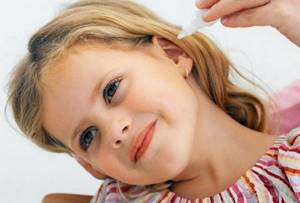
Reviews
There are a lot of reviews on the Internet about ear ointments. There are mixed reviews about Flucinar. Patients report that the medication is very helpful at the initial stage of therapy. In addition, you can come across reports that the drug helps to eliminate unpleasant symptoms, but after stopping treatment they recur with renewed vigor. When Flucinar ointment is not used for some time, itching begins again, as well as peeling and redness.
According to reviews of medical specialists about Clotrimazole, it is known that the patient must undergo a full course of therapy, and also not forget and not be lazy to clean the ear of purulent exudate. You need to maintain ear hygiene and do not use headphones often, as they can harbor fungus.
"Gyoksizon" has more negative reviews than positive ones. Most often we are talking about the time after which the medication begins to “work” - for some, a partially positive effect appears only after ten days of use, although the effect is promised on the second or third day. In addition, patients report greasy yellow marks that remain at the site of liniment application.
What is better “Levomekol” or “Vishnevsky” ointment? According to patient responses, both drugs effectively cope with inflammatory ear infections. They perfectly eliminate pain, and also fight pathogens and help speed up the healing process.
Causes and mechanisms
It is known that during pregnancy, a woman’s body is busy providing for the needs of the child. Many systems are being rebuilt and operating in enhanced mode. In order to preserve and bear the baby, the activity of immune processes decreases, because the fetus is perceived by the mother’s defense mechanisms as a foreign agent (half of its genetic material is paternal). And after childbirth, the body needs time to recover. And then, in order to breastfeed the child, the mother herself needs to eat well, which is not always possible.
The listed points in many ways create conditions for the development of infectious diseases, including during breastfeeding (breastfeeding). Against the background of a decrease in the general resistance of the body, damage to the upper parts of the respiratory tract often occurs - nasopharyngitis. And the pharynx, as you know, communicates with the cavity of the middle ear through the Eustachian tube. The epithelium of the latter usually does not allow the spread of microbes, but during inflammation this function is lost.
The tubogenic route of infection into the ear is the most common. It is also used for chronic inflammation in the nasopharynx (rhinitis, sinusitis, tonsillitis, pharyngitis). Otitis in a nursing mother becomes the result of activation of the bacterial flora:
- Staphylococcus.
- Pneumococcus.
- Haemophilus influenzae.
- Moraxella.
And viral inflammation of the middle ear occurs during ARVI, which happens during the cold season. We must not forget about the hematogenous route of infection into the tympanic cavity, for example, with influenza, scarlet fever or measles. Injury to the eardrum is an extremely rare situation in women who are breastfeeding. But it can also cause otitis media.
Otitis during the lactation period, as a rule, is secondary. It occurs against the background of a decrease in general and local resistance of the body, being a complication of another pathology.
